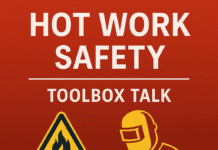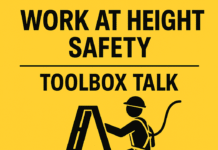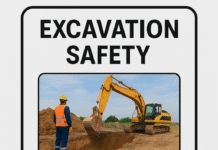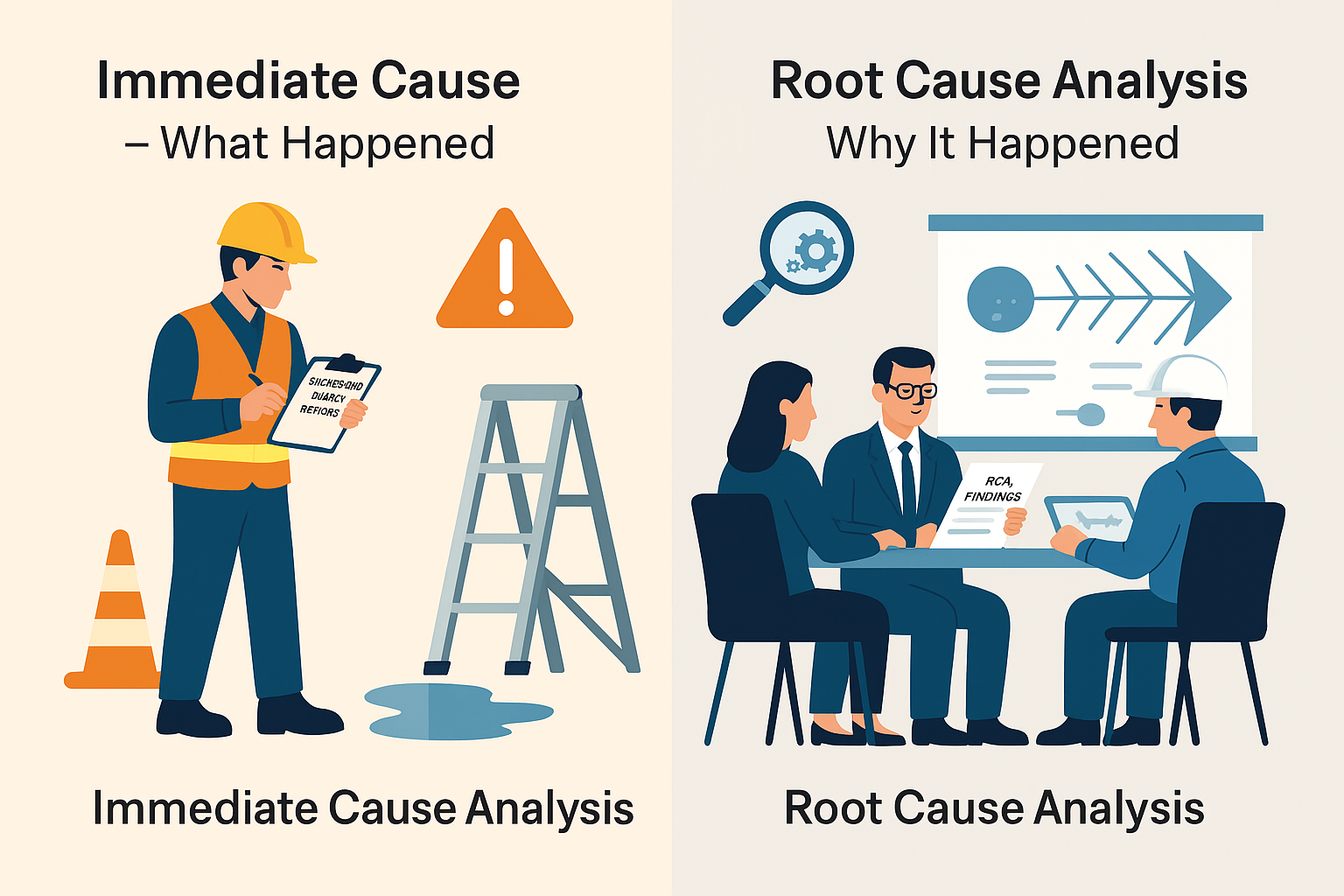
Basic Safety Interview Questions and Answers | Download PPT
Safety in the workplace is a paramount concern that organizations take seriously. Ensuring a secure environment not only protects employees but also contributes to overall productivity and success. In safety interviews, candidates are often asked a series of questions to gauge their understanding and commitment to maintaining a safe working environment.
Introduction
Importance of Safety in the Workplace
Workplace safety is not just a legal requirement; it’s a moral obligation. Ensuring the well-being of employees creates a positive work environment, fosters productivity, and enhances employee satisfaction.
The Significance of Safety Interviews
Safety interviews serve as a crucial step in assessing a candidate’s mindset towards safety. It’s an opportunity for employers to understand how an individual perceives and prioritizes safety.
1. What does safety mean to you?
- Safety, to me, is a commitment to creating an environment where everyone can perform their tasks without the risk of harm. It involves being aware of potential hazards, following established protocols, and actively participating in maintaining a secure workplace.
2. How do you prioritize safety in your work?
- I prioritize safety by incorporating it into every aspect of my daily tasks. I start by assessing potential risks, following established safety guidelines, and wearing appropriate personal protective equipment (PPE). Regular safety checks and ensuring that colleagues are also adhering to safety protocols contribute to a secure work environment.
3. What steps do you take when you notice a safety hazard?
- When I identify a safety hazard, my immediate action is to isolate the area if possible and report it to the relevant supervisor or safety officer. If it’s within my capacity, I address minor issues promptly. It is crucial to communicate the hazard effectively to prevent accidents and collaborate to find a solution.
4. How do you handle pressure or tight deadlines without compromising safety?
- I believe that safety should never be sacrificed for speed. In times of pressure, I prioritize planning and organization to ensure that safety measures are not compromised. If deadlines are challenging, I communicate with the team to find a balance between efficiency and maintaining a safe work environment.
5. What safety training and certifications do you have?
- I have received training in [mention specific safety programs or certifications relevant to your industry], ensuring a comprehensive understanding of safety protocols. Regular updates and refreshers are essential to stay informed about any changes in safety standards.
6. Describe a situation where you had to resolve a safety issue.
- In a previous role, I noticed a potential electrical hazard in the workspace. I immediately halted operations, informed the supervisor, and collaborated with the maintenance team to resolve the issue promptly. The quick response prevented any accidents and underscored the importance of vigilance in maintaining a safe workplace.
7. How do you promote a culture of safety in the workplace?
- To foster a culture of safety, I actively engage in safety discussions during team meetings, share relevant safety information, and encourage open communication about potential hazards. Leading by example, consistently following safety protocols, and recognizing and rewarding safe behavior contribute to creating a workplace where safety is a shared responsibility.
8. How do you stay informed about the latest safety regulations and best practices in your industry?
- I regularly attend safety workshops, seminars, and industry conferences to stay updated on the latest regulations and best practices. Subscribing to relevant publications and participating in online forums are also part of my continuous learning process to ensure I remain well-informed.
9. Can you provide an example of a time when you proactively identified and addressed a potential safety concern before it became a significant issue?
- In my previous role, I noticed a gradual deterioration of a safety railing. Instead of waiting for it to become a serious issue, I reported it immediately. The maintenance team reinforced the railing, preventing a potential accident and demonstrating the importance of proactive safety vigilance.
10. How do you ensure that new team members are adequately trained on safety protocols? – When onboarding new team members, I prioritize a thorough orientation that includes comprehensive safety training. This involves explaining emergency procedures, demonstrating the correct use of safety equipment, and providing an overview of the workplace’s specific safety guidelines. I also encourage new team members to ask questions and seek clarification on safety matters.
11. What role do regular safety audits play in your approach to maintaining a safe work environment? – Regular safety audits are integral to my approach. They serve as a proactive measure to identify potential hazards, assess the effectiveness of existing safety measures, and make necessary improvements. Being actively involved in safety audits helps create a continuous improvement mindset within the team.
12. How do you handle a situation where a team member is not following safety protocols? – If I observe a team member not following safety protocols, I approach them respectfully and remind them of the importance of adherence to ensure their safety and the safety of others. If the behavior persists, I escalate the matter to the supervisor or safety officer, emphasizing the need for corrective action to maintain a secure work environment.
13. Describe a time when you had to lead a safety training session. How did you ensure effective communication of the safety information? – In a previous role, I was tasked with leading a safety training session for a new set of employees. I structured the session to be interactive, using real-life examples and practical demonstrations. Encouraging open discussion and addressing questions helped ensure that the team not only understood the information but also felt comfortable applying it in their daily tasks.
14. What steps do you take to address ergonomic concerns and prevent workplace injuries related to repetitive tasks? – I actively promote ergonomic awareness by regularly assessing workstations and suggesting adjustments to minimize the risk of repetitive strain injuries. Encouraging short breaks, providing ergonomic equipment, and educating the team on proper posture contribute to a healthier and safer work environment.
HAZOP Study for Process Industry | Download PPT
Engineering Safety MCQs | Download PPT
Construction Safety MCQs | Download PPT
According to OSHA and NEBOSH: Difference Between Accident and Incident | Download PPT
FAQs
How can individuals enhance their safety awareness?
Individuals can enhance safety awareness by staying informed about industry best practices, participating in relevant training, and consistently applying safety measures in their work.
What are some common safety certifications?
Common safety certifications include OSHA certifications, CPR and first aid training, Hazardous Materials (HAZMAT) certifications, and various industry-specific safety certifications.
How can organizations reinforce a culture of safety?
Organizations can reinforce a culture of safety by providing regular training, promoting open communication about safety concerns, recognizing and rewarding safe behavior, and actively involving employees in safety initiatives.
Are there specific industries with higher safety standards?
Industries such as construction, healthcare, and manufacturing often have higher safety standards due to the nature of their operations. However, safety should be a priority in every industry.
Can safety practices positively impact productivity?
Yes, safety practices can positively impact productivity. A safe working environment reduces accidents and injuries, leading to fewer disruptions and increased employee morale and efficiency.
























